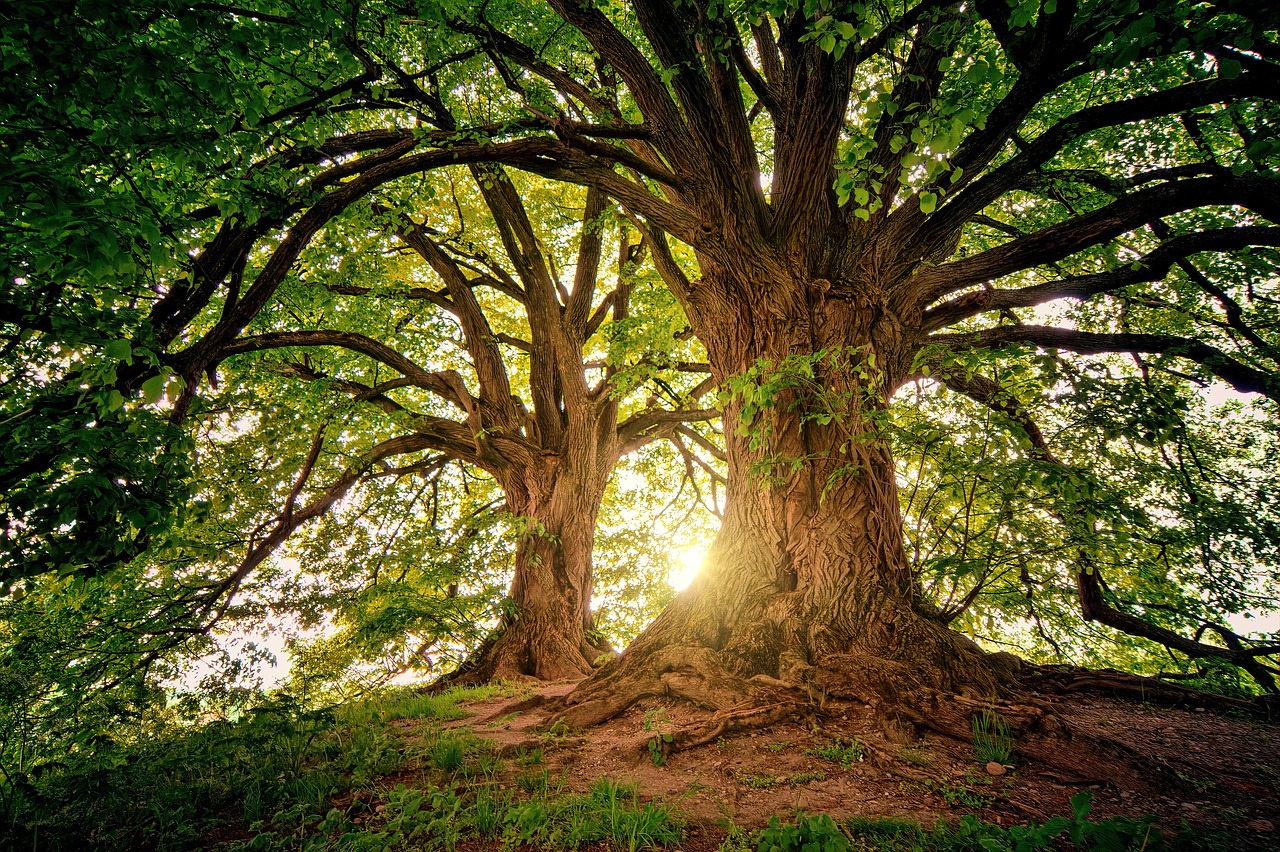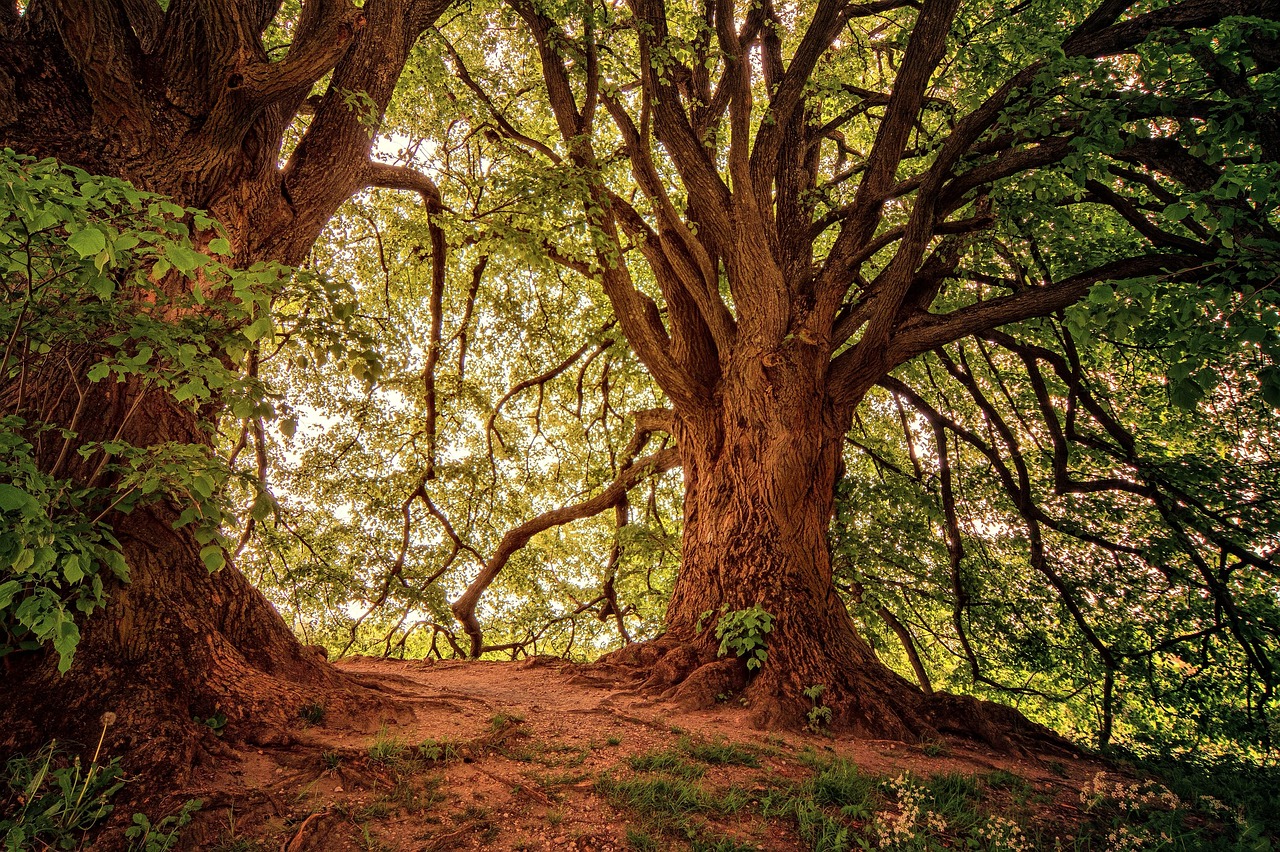Pruning shade trees effectively enhances their cooling efficiency during summer by allowing more airflow and sunlight to reach the ground. This not only helps lower temperatures but also promotes healthier tree growth.
Shade trees play a vital role in urban and suburban environments. They provide relief from the heat, enhance property values, and improve air quality. However, for these benefits to be maximized, proper care and maintenance are essential. One of the most effective ways to maintain the health of shade trees is through regular pruning.

Pruning involves the selective removal of certain parts of a tree, such as branches, buds, or roots. This practice can significantly influence a tree’s growth pattern, health, and overall performance. When performed correctly, pruning can improve a tree’s structural integrity and aesthetic appeal while increasing its ability to provide shade and cooling.
The Importance of Pruning Shade Trees
Understanding the significance of pruning shade trees is crucial for homeowners and landscape professionals alike. Proper pruning can lead to several benefits:
- Enhanced sunlight penetration to lower vegetation.
- Improved air circulation around the tree.
- Reduction of pests and diseases.
- Increased longevity of the tree.
- Better overall appearance and shape of the tree.
When trees are allowed to grow without pruning, they may develop dense canopies that block sunlight from reaching the ground. This can result in higher temperatures in shaded areas, counteracting the intended cooling benefits. Regular pruning helps manage the canopy size and shape, promoting healthier growth patterns and optimizing shade coverage.

Optimal Pruning Techniques
To achieve the best results from pruning, it’s essential to use proper techniques. The following guidelines can help ensure effective pruning:
1. Timing
The best time to prune most shade trees is during late winter or early spring before new growth begins. This timing allows for better healing and reduces stress on the tree. However, some species may require different timing, so it’s important to research specific varieties.
2. Tools
Using the right tools is crucial for successful pruning. Some essential tools include:

- Hand pruners for small branches.
- Loppers for medium-sized branches.
- Saws for larger limbs.
- Safety goggles and gloves for protection.
3. Pruning Techniques
There are several techniques that can be utilized when pruning shade trees:
- Crown Thinning: This technique involves removing select branches within the canopy to improve light penetration and air circulation.
- Crown Raising: This entails removing lower branches to elevate the canopy and allow more sunlight to reach the ground.
- Crown Reduction: This method reduces the size of the tree’s canopy while maintaining its natural shape. It can help control the height and spread of large trees.
Benefits of Pruning for Cooling Efficiency
Pruning shade trees for better cooling efficiency has multiple advantages. Here are some key points to consider:
| Benefit | Description |
|---|---|
| Increased Shade Coverage | Properly pruned trees can provide more effective shade, lowering ground temperatures significantly. |
| Improved Airflow | Thinned canopies allow breezes to pass through, enhancing cooling effects. |
| Healthier Trees | Regular pruning helps prevent disease by removing dead or diseased branches, promoting overall health. |
| Energy Savings | Trees with optimal canopy structures can reduce air conditioning costs by shielding buildings from direct sunlight. |
The link between tree health and summer cooling efficiency cannot be underestimated. Well-maintained shade trees can significantly impact energy consumption in residential areas. By strategically pruning trees, homeowners can enjoy cooler outdoor spaces while saving on energy bills.

In addition to promoting cooling efficiency, maintaining shade trees through pruning contributes to a vibrant and healthy ecosystem. Trees support wildlife by providing habitats, improving biodiversity in urban settings. Moreover, they contribute to carbon sequestration, helping mitigate climate change effects.
Common Tree Species for Pruning
When considering pruning for cooling efficiency, it is essential to understand the different tree species that are commonly found in urban and suburban landscapes. Each species has unique characteristics that influence their growth patterns and optimal pruning techniques. Below are some popular shade tree species and their pruning needs:
| Tree Species | Characteristics | Pruning Tips |
|---|---|---|
| Oak | Large and sturdy, oaks provide extensive shade. | Prune during late winter to early spring to avoid oak wilt disease. |
| Maple | Known for vibrant fall colors, maples thrive in various soils. | Prune in late summer to minimize sap loss. |
| Beech | Beeches have smooth bark and dense foliage, making them excellent shade providers. | Prune in late fall after leaves drop, promoting healthy growth. |
| Linden | Lindens are fast-growing and highly fragrant when in bloom. | Best pruned in late winter for optimal air circulation. |
Signs That Your Shade Trees Need Pruning
Identifying when to prune is critical for maintaining the health of shade trees. Here are some signs that indicate a tree may need pruning:
- Dead or Dying Branches: Look for branches that have no leaves or appear brittle.
- Crowded Canopy: Trees with overlapping branches can hinder airflow and reduce sunlight.
- Pests or Disease: Signs of infestation or disease can warrant immediate pruning to protect the tree.
- Improper Growth Shape: Trees that grow unevenly may require shaping through pruning.
Regular inspections of your trees can help catch these issues early. Being proactive about pruning can prevent further damage and ensure that your trees remain healthy and efficient in providing shade.
Pruning Techniques for Different Tree Sizes
The size of the tree significantly influences the pruning techniques that should be used. Here are some general guidelines based on tree size:
Small Trees
For smaller trees, such as ornamental varieties, follow these techniques:
- Use hand pruners for branches less than ¾ inch in diameter.
- Aim to remove approximately 20% of the canopy during each pruning session to promote healthy growth.
Medium Trees
Medium-sized trees may require more advanced techniques:
- Utilize loppers for branches up to 1 ½ inches in diameter.
- Crown thinning can be particularly effective for managing the canopy.
Large Trees
Large trees often require professional assistance due to their height and size:
- Use a ladder and pole saws if necessary, but prioritize safety.
- Consider hiring an arborist for intricate cuts and heavy pruning tasks.
Best Practices for Pruning Shade Trees
In order to maximize the benefits of pruning, adhere to the following best practices:
- Make Clean Cuts: Ensure that all cuts are clean to promote quick healing. Ragged cuts can lead to disease entry points.
- Avoid Topping: Topping trees can lead to stress and poor growth. Instead, selectively prune to maintain natural shape.
- Step Back Regularly: Periodically step back and evaluate your work from different angles to ensure an even shape.
- Dispose of Debris: Remove all cut branches and leaves to prevent pest attraction and disease spread.
By following these best practices, you can enhance the health of your shade trees while optimizing their cooling efficiency during the hot summer months. Each action taken contributes not only to the aesthetics of your landscape but also to its overall functionality.
The Role of Professional Arborists
If you’re unsure about how to properly prune your shade trees or if the task seems overwhelming, consider hiring a professional arborist. Arborists have specialized training and experience in tree care. They can assess your trees’ health and recommend appropriate actions. Here are some advantages of hiring a professional:
- Expert Knowledge: Arborists understand tree biology and can make informed decisions about pruning methods.
- Safety First: Professionals have the right tools and safety equipment, reducing the risk of injury.
- Long-term Health: Regular maintenance by a professional can lead to healthier trees that provide better cooling efficiency over time.
The investment in professional tree care can yield long-term benefits for both your property and the environment. By ensuring proper tree maintenance, you contribute positively to your community’s overall green space and climate resilience.
Seasonal Considerations for Pruning Shade Trees
When it comes to pruning shade trees, timing is crucial. Different seasons can affect both the health of the tree and the effectiveness of the pruning process. Understanding how seasonal changes impact tree growth and health can help ensure better outcomes.
Spring Pruning
Spring is often considered an ideal time for pruning. As trees begin to wake from winter dormancy, they enter a phase of active growth. Here are some advantages of spring pruning:
- Active Growth: Pruning in spring allows trees to heal quickly as they start to produce new growth.
- Visibility: With fewer leaves, it is easier to see the structure of the tree and identify areas that need attention.
- Reduced Stress: Trees are less stressed during this period, allowing for a more effective pruning process.
However, caution should be taken with certain species, such as oaks, which are susceptible to oak wilt if pruned at the wrong time.
Summer Pruning
Summer pruning can be beneficial for controlling tree size and shape. Here’s what to consider when pruning during this season:
- Light Management: Pruning during the summer can help manage light exposure to lower foliage, promoting better airflow.
- Reduced Sap Loss: Some species may experience less sap loss when pruned in summer compared to spring.
- Focus on Aesthetics: This time can be useful for shaping trees and enhancing their visual appeal.
However, summer pruning should be done judiciously, as removing too much foliage can stress trees during peak heat.
Fall Pruning
Fall is generally not recommended for most shade trees. However, there are specific cases where it may be appropriate:
- Post-Leaves Drop: Once trees have lost their leaves, it can be easier to see the structure and identify dead or diseased wood.
- Pest Control: Removing dead branches in the fall can help mitigate pest problems in the spring.
Yet, the risk of cold damage to freshly cut branches makes fall pruning less favorable for many species.
Winter Pruning
Winter is often seen as a dormant season for trees. Pruning during this time can have its benefits:
- Easy Access: With no leaves, it’s easier to assess the tree’s structure and make informed cuts.
- Promotes Growth: Pruning in winter encourages vigorous growth in spring as trees respond positively to cuts made during dormancy.
- Reduced Disease Risk: Many tree diseases are dormant in winter, reducing the risk of infection from cuts.
This method is especially effective for many hardwood species but may not be suitable for all types.
The Impact of Tree Location and Environment
The placement of shade trees can also influence their cooling efficiency and the need for pruning. Factors such as proximity to buildings, other vegetation, and environmental conditions can play significant roles.
Proximity to Structures
Trees planted close to buildings may require more frequent pruning. Here are some considerations:
- Canopy Height: Trees that grow too close to rooftops can lead to damage and obstruct airflow, necessitating regular maintenance.
- Sunlight Exposure: Trees that shade buildings too much may need their canopies thinned to allow light into windows, reducing heating costs in winter.
Surrounding Vegetation
The presence of other plants can affect light availability for shade trees. When other plants compete for resources, it may be necessary to prune:
- Crown Thinning: This technique can help ensure that shade trees receive adequate sunlight even when surrounded by other vegetation.
- Biodiversity Promotion: Pruning can create space for various plants beneath the canopy, enhancing overall biodiversity.
Environmental Conditions
The local climate significantly impacts tree health and growth patterns. Consider these factors when planning your pruning:
- Drought Conditions: Trees under water stress may require less aggressive pruning to conserve energy.
- Soil Quality: Poor soil conditions may necessitate more frequent assessments and targeted pruning to support tree health.
Understanding these environmental factors helps gardeners and homeowners make informed decisions about when and how to prune shade trees for optimal cooling efficiency. By considering seasonal timing and environmental influences, you can enhance the effectiveness of your pruning efforts.
Sustainable Practices for Tree Care
Sustainable tree care practices not only benefit individual trees but also contribute positively to the environment. Here are some sustainable approaches to consider when caring for shade trees:
- Mulching: Apply organic mulch around the base of trees to retain moisture, suppress weeds, and enhance soil health.
- Composting: Use compost as a natural fertilizer to promote healthy growth without harmful chemicals.
- Water Conservation: Implement efficient watering techniques, such as drip irrigation, to minimize water waste.
Adopting sustainable practices in your tree care routine promotes healthier trees and a greener environment. By integrating these practices with proper pruning techniques, you will further enhance the cooling efficiency and longevity of your shade trees.
Additional Considerations for Shade Tree Care
As you continue to care for your shade trees, there are several additional considerations that can enhance their overall health and cooling efficiency. These factors can help you create a thriving environment for your trees while maximizing their benefits for your property.
Soil Health
The health of the soil around your shade trees plays a crucial role in their growth and longevity. Here are some practices to improve soil health:
- Aeration: Aerating the soil around trees can help improve root growth and enhance water absorption.
- Soil Testing: Conduct soil tests to determine pH levels and nutrient content. This information can help guide fertilization efforts.
- Organic Amendments: Incorporate organic matter such as compost or aged manure to enrich the soil and foster beneficial microbial activity.
Tree Diversity
Planting a diverse array of tree species can provide multiple benefits:
- Biodiversity: Diverse plantings promote a healthier ecosystem and reduce the risk of disease spreading among similar species.
- Aesthetic Appeal: Different species offer unique colors, shapes, and textures, enhancing the visual appeal of your landscape.
- Seasonal Interest: Varied tree species provide interest throughout the year, with different flowering and foliage patterns.
Incorporating a variety of shade trees can also improve the overall cooling efficiency of your property by creating microclimates that benefit other plants and wildlife.
Pest Management
Integrating pest management strategies is essential for maintaining healthy shade trees. Here are some effective methods:
- Monitoring: Regularly check trees for signs of pests or diseases, including discoloration, leaf drop, or unusual growth patterns.
- Natural Predators: Encourage beneficial insects, such as ladybugs and lacewings, to help control pest populations.
- Avoid Chemical Pesticides: Use organic or natural pest control methods whenever possible to minimize harm to beneficial organisms.
By taking a proactive approach to pest management, you can ensure the continued health of your shade trees while promoting ecological balance in your landscape.
Final Thoughts
Pruning shade trees is an essential practice that contributes significantly to summer cooling efficiency. With proper techniques and timing, homeowners can enhance their trees’ health while maximizing shade coverage. The benefits extend beyond individual trees, impacting energy consumption, air quality, and local biodiversity.
Sustainable practices, including mulching, composting, and efficient watering techniques, complement effective pruning strategies. By focusing on soil health, tree diversity, and integrated pest management, you can create a thriving environment for your shade trees while ensuring they continue to provide relief from summer heat.
As we face increasing temperatures and climate change challenges, the role of shade trees becomes even more critical. Investing time and resources into proper tree care not only benefits individual properties but also contributes positively to our communities and the environment. With well-maintained shade trees, we can enjoy cooler spaces during hot summers while fostering healthier ecosystems for future generations.
In conclusion, understanding the intricacies of pruning shade trees and adopting sustainable practices is vital for effective tree care. Whether you choose to prune your trees yourself or hire a professional arborist, your efforts will yield lasting rewards that enhance both your property and the environment.
